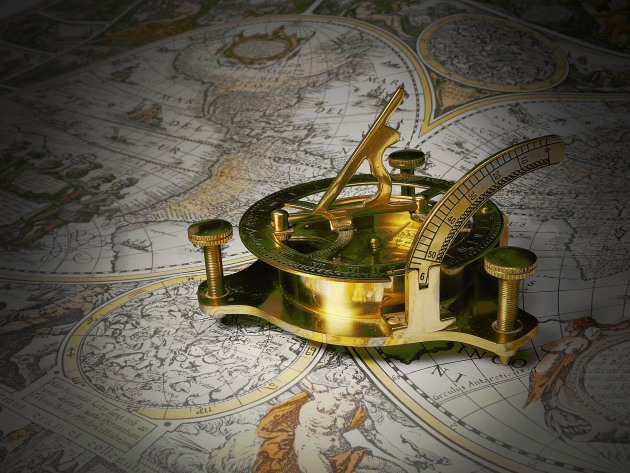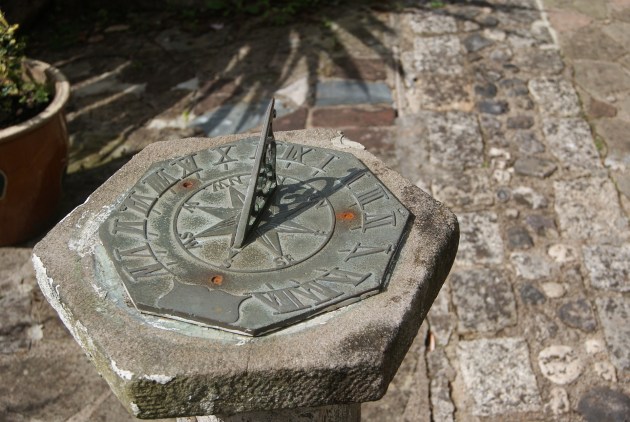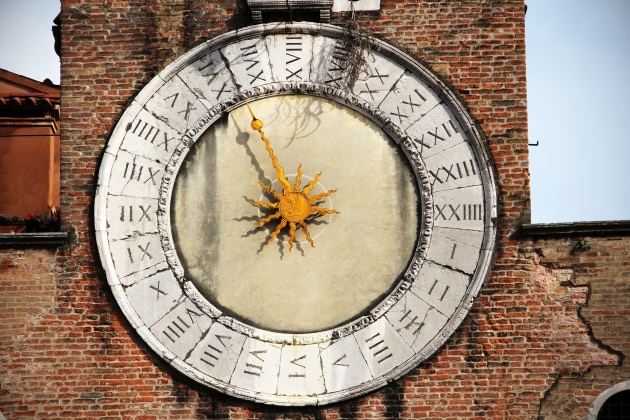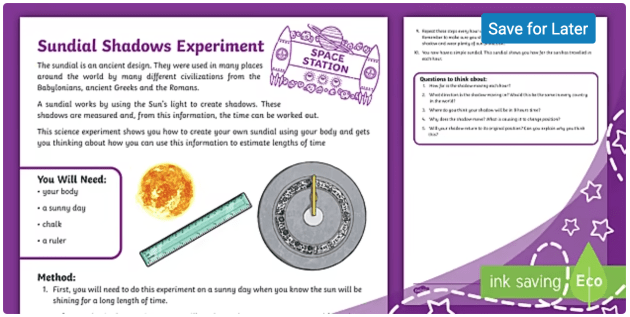


A sundial is a device that can tell you what time it is depending on where the Sun casts its shadow on the sundial. A sundial is made up of two parts: a flat circular plate and a stick called a gnomon. The gnomon casts a shadow on the plate and this shadow shows the time.

Before clocks were invented, sundials were the only way to tell the time! When the first clocks were created, sundials were still important because early clocks were not accurate, so they had to be reset regularly using sundials as a reference.
To understand how a sundial works, we have to understand how the Sun casts shadows. When the Earth rotates on its axis, the Sun moves across the sky, causing objects to cast shadows. So, how does a sundial work? As the Sun changes relative positions in the sky over the day, the position of the shadow cast by the gnomon changes to align with the different times around the outside of the circular plate. This way you can tell the time by looking at where the shadow is cast, using the markings around the edge of the sundial base.
Remember: A sundial shows the local solar time, which may have to be adjusted to account for national time in your country due to seasons and Daylight Saving Time (DST) or British Summer Time (BST). This is when clocks go backwards and forwards an hour as the seasons change.

The first recorded sundial was made in Ancient Egypt in 1500 BC. Some of these sundials were small enough to fit in your pocket. Sundials became studied properly in Ancient Greece, with the gnomon being set up parallel to the Earth’s axis. Because the Greeks had a thorough understanding of geometry, they could develop more complex sundials.
The Romans adopted the Greek sundials, with the first record of a sundial in Rome being in 293 BC. Plautus, who wrote plays, complained in one of his plays about the day being ‘chopped into pieces’ by these sundials! In 10 BC, the Ancient Romans built a very large sundial called the Solarium Augusti. It is an obelisk, which is a very tall stone pillar that has a big base and gets thinner towards the top.
Roman sundials were not completely accurate because they were designed for a lower latitude than Rome, but the inaccuracy was very small so it was not noticed for many years!
During medieval times, sundials were important in the Islamic world for time-keeping for prayers. Algebra and trigonometry helped people to improve the accuracy of the sundials. At the same time, in Europe, timekeeping fell by the wayside.

Teach kids all about how sundials work with our brilliant range of teaching resources about sundials. All our resources are easily printable and downloadable, perfect to save time lesson planning.
Check out our Make a Sundial Activity for a fun, hands-on way to get kids engaged in learning about how sundials work and making their own sundial. What better way to learn than by experimenting themselves? For another interesting interactive activity, have a look at our Sundial Science Experiment, which gets kids experimenting with sundials using everyday items around the house or classroom.

For another sundial activity where children use themselves to create shadows, try this Sundial Shadows Experiment, complete with a beautifully illustrated list of instructions. KS2 children can learn more about sundials, using this KS2 Sundial Worksheet, with a fill in the gaps exercise. For a worksheet covering the Science National Curriculum objective Year 5 Earth and Space, check out our Upper Primary Sundial Worksheet.
To teach kids more about the movements of the Sun, have a look at our colourful KS2 Day and Night PowerPoint. For a deeper understanding of how shadows work, you can enjoy our fantastic How Do Shadows Change? PowerPoint with real life examples.
As sundials are related to the Earth’s rotation, it can be helpful to give more context to how the Earth moves in space to help children understand more about the Earth, Sun and how sundials work. Our Earth’s Movement: Rotation vs Revolution PowerPoint is the perfect resource to teach kids all about how the Earth moves, complete with interesting facts and activities to get involved in.